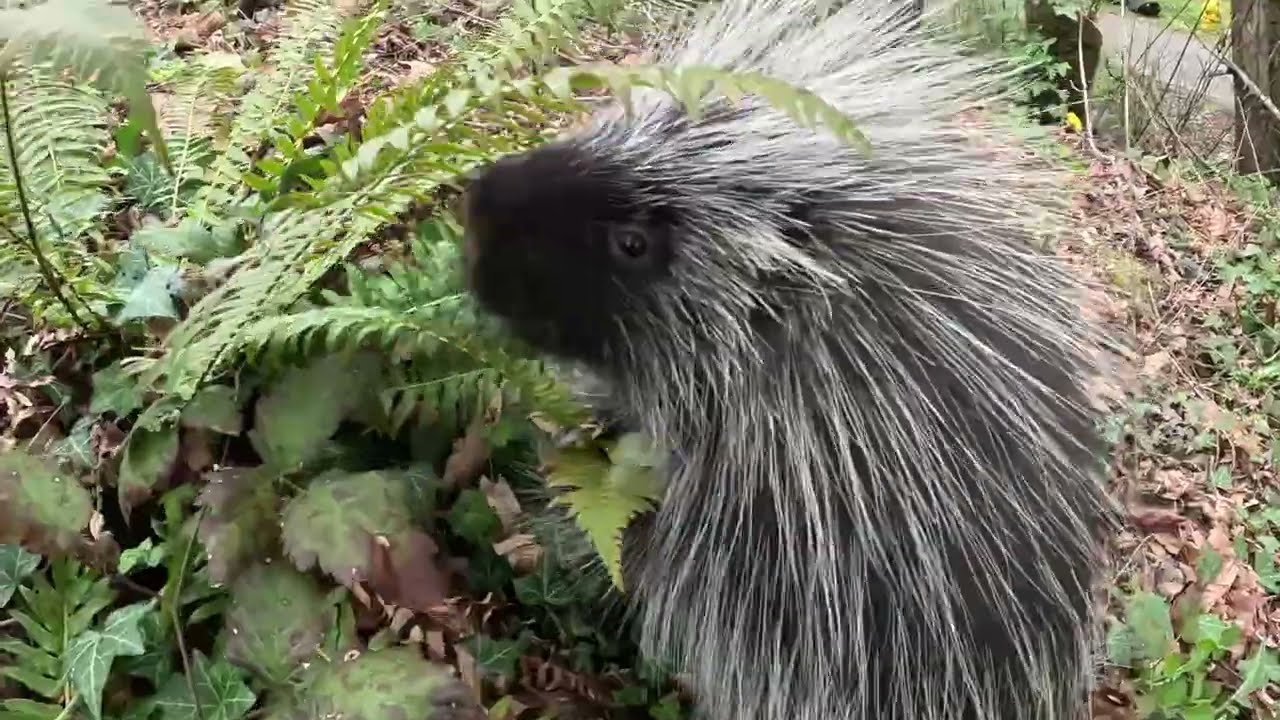- The behavior and dietary habits of porcupines, with a focus on how they forage for wild plants.
- The ecological impact of porcupines and their role in their natural habitats.
- Conservation efforts and challenges faced in preserving porcupine populations.
- The role of zoological institutions in educating the public about porcupines and wildlife conservation.
- Insights into the daily care and management of porcupines in a zoo setting.
Porcupines are fascinating creatures, often misunderstood due to their spiny appearance. Delving into the behavior and dietary habits of porcupines reveals intriguing aspects of these gentle rodents. Known for their quills, porcupines primarily forage for wild plants, showcasing their adaptability and resourceful nature. They are herbivores, with a diet consisting mainly of leaves, herbs, twigs, and green plants. This foraging behavior plays a vital role in maintaining the ecological balance within their habitats.
Porcupines possess sharp front teeth, which they use effectively to gnaw on bark and wood, accessing the inner layers of trees for nourishment. Their foraging techniques are methodical, enabling them to access essential nutrients despite the challenges posed by their spiky exterior. Observing a porcupine as it carefully selects and consumes vegetation offers insight into its dietary preferences and survival strategies.
The ecological impact of porcupines extends beyond mere sustenance. As they feed on various plant materials, they help in controlling vegetation growth, contributing to a balanced ecosystem. Porcupines often play a role in seed dispersal, inadvertently aiding in plant propagation as seeds adhere to their quills. Moreover, their foraging habits create pathways through dense underbrush, facilitating access for other animals.
In their natural habitats, porcupines are preyed upon by predators such as owls, coyotes, and mountain lions. Their quills offer a robust defense mechanism, deterring many potential threats. Despite this, porcupine populations face various challenges, primarily due to human activities and habitat destruction. As their habitats shrink, so do their numbers, making conservation efforts crucial for their survival.
Conservation initiatives for porcupines are multi-faceted, ranging from habitat preservation to research and public education. Conservationists strive to ensure that porcupines continue to thrive in the wild by safeguarding the environments they depend on. Educating the public about the role of porcupines in ecosystems is equally important, fostering a sense of responsibility and stewardship toward these remarkable creatures.
Zoological institutions, such as zoos and wildlife parks, play a pivotal role in raising awareness about porcupines and their conservation. By providing visitors with an opportunity to observe these animals up close, zoos educate and inspire individuals to appreciate wildlife. They offer valuable insights into the behavior and needs of porcupines, highlighting the importance of conservation efforts to protect them.
In addition to public education, zoos are involved in the daily care and management of porcupines. Ensuring the health and well-being of these animals requires knowledge and dedication. Zookeepers monitor dietary intake, health, and behavior, creating environments that mimic natural settings as closely as possible. Such efforts contribute to the overall well-being of porcupines and support conservation breeding programs.
The challenges of managing porcupines in a zoo setting are considerable. Their quills, while a natural defense, require careful handling during veterinary care and routine checks. Zookeepers employ various techniques to minimize stress and ensure safety, both for the porcupines and themselves. Enrichment activities play a key role in maintaining their mental stimulation, promoting natural foraging behaviors and physical activity.
Engaging with the public is another vital aspect of zoos’ conservation work. Interactive displays, educational talks, and live demonstrations provide platforms for sharing stories about porcupines and their ecological significance. These initiatives create a deeper connection between visitors and wildlife, encouraging a supportive attitude towards conservation.
The integration of technology and research in zoological institutions is transforming how we understand and manage porcupines. Utilizing tracking devices, data collection, and genetic studies, scientists gain insights into porcupine behavior and threats they encounter. Such knowledge is imperative for developing effective conservation strategies and enhancing zoo management practices.
Critically, collaborative efforts between zoos, conservation organizations, and local communities are vital for protecting porcupines. By working together, they address the challenges posed by habitat loss, climate change, and human-wildlife conflict. Community-based conservation projects are proving successful, promoting sustainable coexistence and benefiting both humans and wildlife.
The portrayal of porcupines in media and culture often overlooks their importance and unique traits. Changing the narrative is essential for improving public perception and support for conservation. Highlighting positive stories and successes in porcupine conservation can inspire individuals to make informed choices that benefit the environment.
In summary, the adorable porcupine’s foraging behavior is a small part of a much wider ecological narrative. Their interaction with wild plants illustrates broader themes of adaptation and survival. Through dedicated conservation efforts, research, and education, we can appreciate and protect these incredible animals, ensuring they remain an integral part of our world’s biodiversity.
*****
Source Description
Nettle’s Big Snackventure
Nettle loves to munch as she walks, so a member of the zoo’s horticulture team came along on this adventure to make sure everything was safe to nibble. Here she’s sampling: OsoBerry, sword fern, blackberry, red twig dogwood, curly dock and hawthorn. All porcupine approved!


